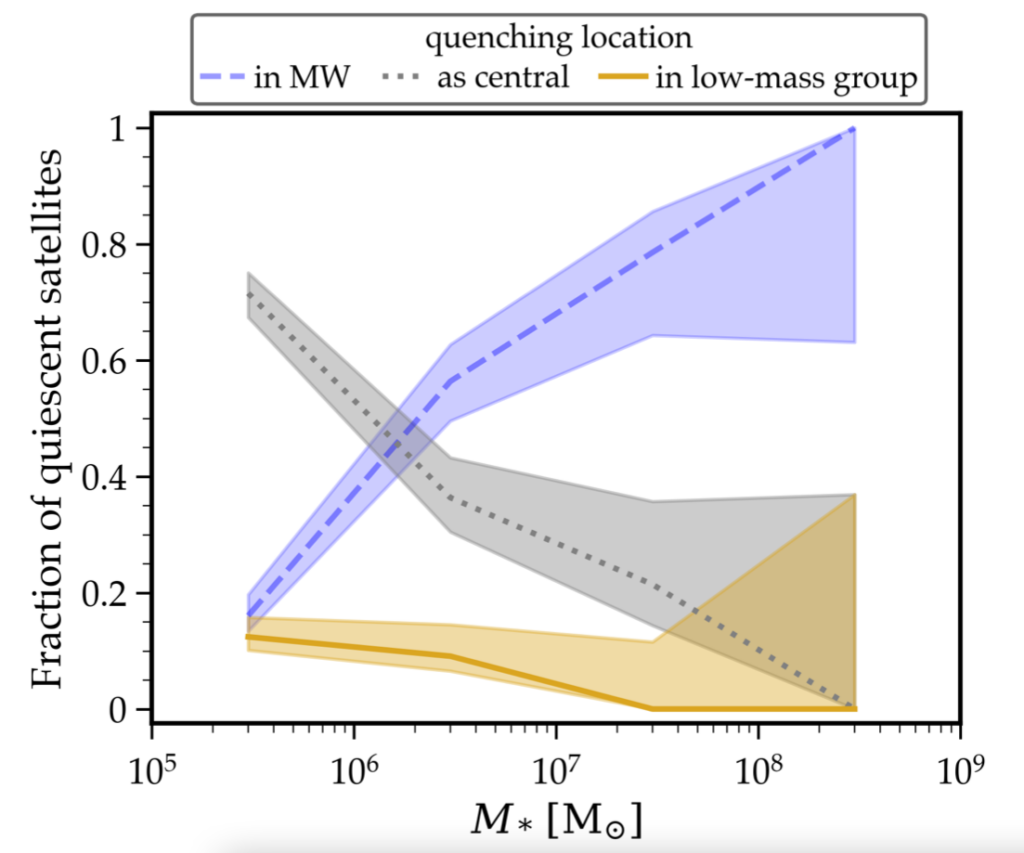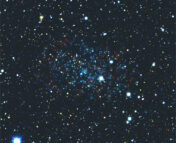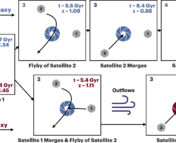Title: Extinguishing the FIRE: environmental quenching of satellite galaxies around Milky Way-mass hosts in simulations
Authors: Jenna Samuel, Andrew Wetzel, Isaiah Santistevan, Erik Tollerud, Jorge Moreno, Michael Boylan-Kolchin, Jeremy Bailin, Bhavya Pardasani
First Author’s Institution: Department of Astronomy, The University of Texas at Austin
Status: Submitted to MNRAS [closed access]
Many physical processes are thought to be responsible for shutting down star formation in galaxies. Galaxies that are no longer actively forming stars are typically referred to as “quiescent”‘ or “quenched’ (see this astrobite for more), and observations reveal that the environment that a galaxy inhabits can have a dramatic effect on whether or not it will continue to form stars.
Satellite galaxies (galaxies that are orbiting a larger host galaxy) are particularly sensitive to quenching processes, and observations of satellite galaxies of the Milky Way (MW) show that satellites contain less star-forming gas and have lower star formation rates relative to similar mass galaxies that exist in isolation. One explanation for this difference is ram-pressure stripping. As satellite galaxies move through the gaseous medium of their host halo, the relative bulk motion causes them to experience a drag force. If this force due to ram-pressure is larger than the gravitational force binding the gas to the satellite galaxy, the gas that is necessary for star formation can be stripped and removed from the satellite galaxy.
While environmental effects such as ram-pressure stripping can explain the difference in star-formation rates observed between satellite galaxies and isolated galaxies, the exact role that environment plays in quenching a galaxy, and how this varies with galaxy mass, remains unclear. For example, some satellites of the Milky Way are expected to have joined a smaller group of galaxies before entering the Milky Way environment. It is possible that these galaxies are “preprocessed” by the smaller group, and so start to quench within this small group even before they cross the boundary of the Milky Way halo.
Today’s authors investigate the effect of environment on the gas content and star-formation rates of present day satellite galaxies in the FIRE-2 simulations, ultimately aiming to answer the question: where and when does star formation shut-off in satellite galaxies of MW-mass hosts?
Where?
While environmental processes such as ram-pressure stripping are thought to play a large role in the shut-down of star formation in satellite galaxies, Figure 1 shows that environmental processes occurring in MW-mass halos are not solely to blame.

Figure 1 shows the fraction of quiescent galaxies by the environment of their last site of star formation (effectively showing the location where the galaxy quenched). This location can be inside the MW halo (blue dashed line), preprocessed prior to MW infall in a low-mass group (yellow line), or before it became a satellite of a more massive system, as an isolated central galaxy (grey dotted line). The key takeaway of this plot is that most galaxies with M* > 106 M☉ are quenched within the MW halo, and the likelihood that a galaxy is quenched within the halo increases with stellar mass.
Low-mass galaxies (M* < 106 M☉) are more likely to have quenched in isolation (as centrals). The authors propose that this is likely due to a combination of effects, such as reionisation, stellar feedback (see this bite for more on feedback), and potentially due to the resolution limitations of the simulation. Quenching in a low-mass group is never the dominant mechanism for quenching at any mass scale, but it does contribute at the M* < 107 M☉ mass scale, potentially hastening the rate at which these galaxies quench.
When?
Satellite galaxies are most vulnerable to ram-pressure stripping in high density regions. This means a satellite galaxy will experience the harshest effects of ram-pressure stripping when on its closest passage to the host galaxy (pericentric passage).
Figure 2 shows that when galaxies quench depends on their mass. The majority of low-mass galaxies are already quenched before their first pericentric passage of the host galaxy. More massive satellites typically require at least 1 pericentric passage before completely quenching (corresponding to at least 2.5Gyrs within the MW halo). The highest mass galaxies in the sample (those with M* > 109 M☉ ) have all experienced one pericentric passage but remain star-forming, indicating that they are more robust to ram-pressure stripping than their lower-mass counterparts.

What does this tell us about the end of star formation in satellites of MW-mass hosts? The authors have shown that where and when a galaxy quenches largely depends on its mass. Quenching of MW-like satellites can be achieved through both internal processes (for low-mass satellites), but is primarily achieved through environmental effects due to ram-pressure stripping. They have also shown that satellites can experience these environmental effects before entering their host halo, by experiencing preprocessing as part of a low-mass group prior to infall to a MW-mass halo.
Astrobite edited by Ali Crisp
Featured image credit: European Southern Observatory




